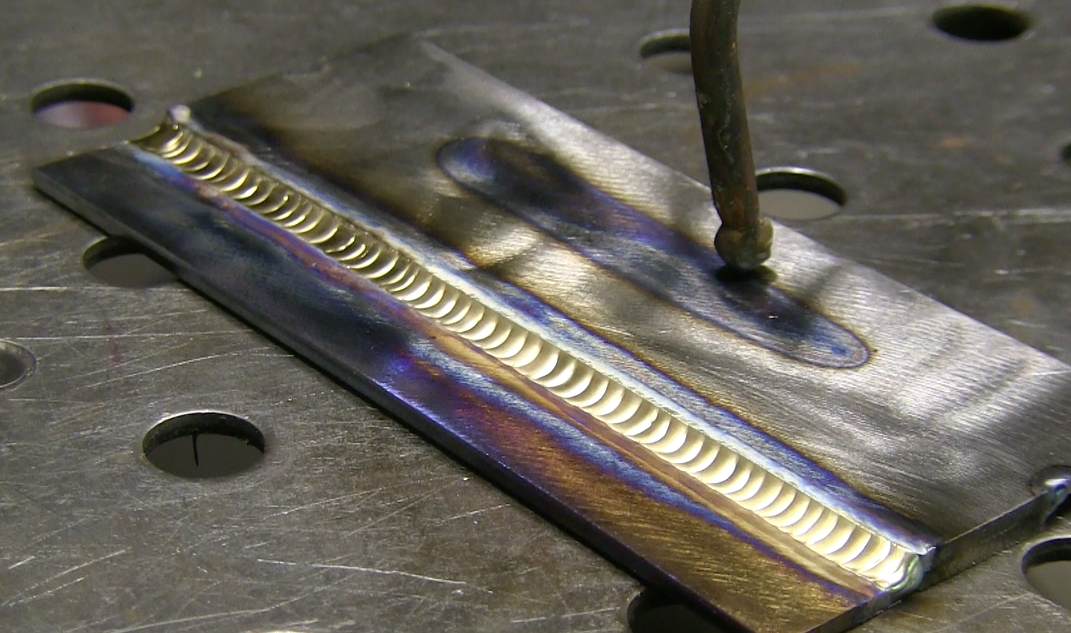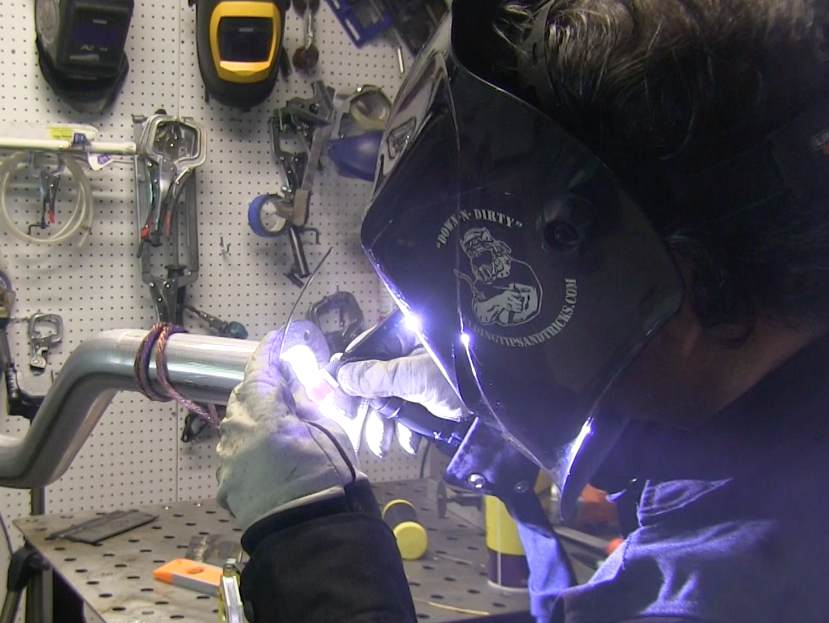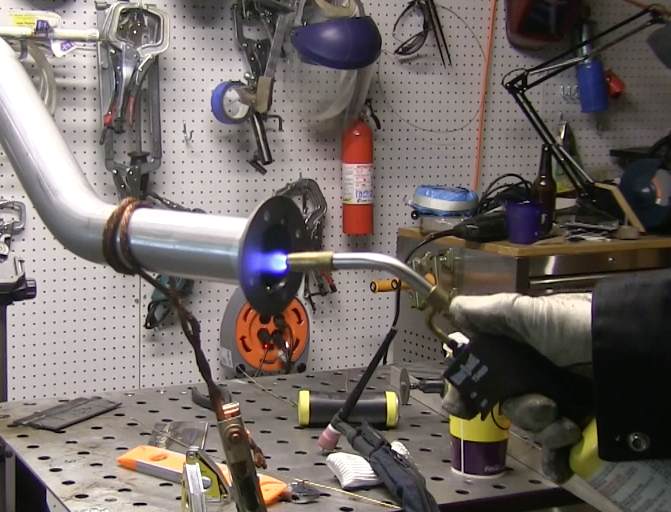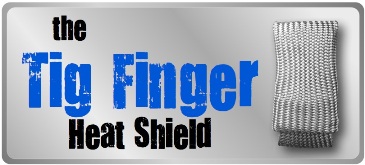TIG Welding Cast Iron to 409 Stainless Steel Tubing
- HOME
- TIG WELDING
- Tig Welding Cast Iron
In this video, I am tig welding (or actually tig brazing) cast iron to some 409 stainless exhaust tubing.
So along the way, I will attempt to answer a few questions about welding/tig brazing cast iron...
Questions like...
- How do you test metal if you think it might be cast iron?
- What filler rod is best for TIG welding cast iron?
- Can you TIG weld cast iron on A/C?
- and why would you want to do that?
- What about preheat?
Metal Identification
One way to identify metal is a spark check using a grinder. . There are spark charts
available in text books as well as reference websites like Wikipedia.
Since
we all seem to carry a camera in our pockets now, I suggest to capture
sparks in a photo and then compare to a spark chart. Its much easier
than comparing moving sparks.
Another piece of information that
helps in addition to the spark test is a magnet test. A magnet test
alone will not give you conclusive results...but it is a piece of
information that can help you ID metal.
When I suspect metal is
cast iron or high carbon steel, I will often do a "puddle test". Which
means I will chose a spot somewhere where it wont compromise the part
and puddle it with a tig torch.
Before I puddle it, I will test it with a file and determine how it cuts before vs after I puddle it.
when
you puddle metal, even it is only for a microsecond, you know you reach
melting temp of the metal so that means you also reach any phase
transformation temperature and then some.
As the metal cools rapidly
from all the cold material surrounding the puddled area, you are
simulating a heat and quench heat treatment.
If the metal has
more than .3% carbon it will harden and if it has a full 2 or 3% carbon
like cast iron, it will harden like glass....A file wont even scratch
the surface.

What filler Rod is best for Tig welding Cast Iron?
There are a lot of factors that can affect a decision on what filler to use for cast iron.
Cost is one of them.
High nickel rods that are over 90% nickel are expensive. A pound of nickel rods can cost over one hundred dollars. geez.
High
nickel rods aka NI rod, work pretty well for tig welding cast iron,
You can also beat the flux off of a nickel stick rod and use it for tig
welding. Sometimes , Stick actually works better due to the affects of
flux on impurities.
The reason nickel rods work is nickel can absorb a
whole bunch of carbon and iron and still remain ductile. Nickel weld
deposits on cast iron are usually machinable so if a whole needs to be
filled and re tapped, that is a plus.
Nickel also seems to be more similar to cast iron in regards to thermal expansion.
But
when thermal expansion and thermal cycles is not a problem, ( as was
the case with my lamp post flange project) Aluminum Bronze filler rod is
way cheaper.
Sometimes a mild steel rod like 7018 or 6013 will
work but since they are both steel rods, any carbon pickup will cause
hardening of the weld deposit.
Reasons for tig welding Cast Iron on AC?

Aluminum bronze tig rod can be utilized while using either AC or DCEN welding currents. But Aluminum Bronze filler rod is very sluggish on DCEN.
The alternating current provides a cleaning action called "cathotic etching" that breaks up surface oxides. Thats the reason AC is used to tig weld aluminum.
Even just a small amount of cleaning action makes a big difference with aluminum bronze filler rod.
I set my AC balance as high as 95% EN and still got a clean puddle....and that allows using a tapered electrode which provides for a lot of arc control.
Another reason for using AC to tig weld cast iron is that less penetration and therefore, less dilution of the cast iron base metal occurs. Cast iron can be nasty, it can be impregnated with oil, carbon, or other impurities...so its best to mix as little of it as possible into the weld.
By using AC, it is possible to have a fluid puddle that wets out into the base metal without lots of amperage.
think in terms of Brazing here and not welding. because that is actually what it is even though its often referred to as welding
Preheating Cast Iron

there are basically 2 methods for welding cast iron:
Either heat the entire part before welding to slow the cooling rate,
or....dont heat the part at all beyond warm and weld as cold as possible.
The preheating method usually works best.
But
for very large parts that cannot be preheated at all...like a large
piece of machinery that got hit by a forklift...it is sometimes possible
to not preheat and weld in very short runs and "peen" the weld deposit
as you go to spread out contractile stresses.
Peening usually means using a ball peen hammer to lightly tap on a weld before it cools to spread out stress.

















